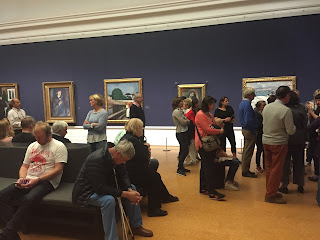Sensing the fabric
What made you aware of the impact that development has on what surrounds it? A reader of my recent op-ed piece on 555 Washington asked me this. I replied that my time-lapse sense of Tokyo, which I've visited every few years since 1989, might be one root of it, but I thought later that walking with my father to our hotel on St. James Place in London in early 1953, seeing the missing teeth on that block that reflected the German's wartime bombing of the city, gave me an early sense of what constitutes fabric.
The pattern persists up to a point, as St. James Place revealed. Urban renewal and its successor, the consolidation of smaller sites to facilitate larger-scale redevelopment, supplant the fabric. They often wrench the present from all connection with the past as a repository of local acts over time. This is why redevelopment can be so destructive.
In Tokyo, I was struck by how good the fabric was, and how little the locals understood what they had, even as they were losing it left and right. I'm not opposed to higher-density redevelopment, but it so rarely shows any real imagination or the slightest interest in regaining, at a new scale, the salient features of what was there before. Perhaps this is impossible, but it would be interesting, not to say responsible, to make the attempt or, if it really can't be done, to limit the damage by putting most of the existing fabric out of bounds.
The pattern persists up to a point, as St. James Place revealed. Urban renewal and its successor, the consolidation of smaller sites to facilitate larger-scale redevelopment, supplant the fabric. They often wrench the present from all connection with the past as a repository of local acts over time. This is why redevelopment can be so destructive.
In Tokyo, I was struck by how good the fabric was, and how little the locals understood what they had, even as they were losing it left and right. I'm not opposed to higher-density redevelopment, but it so rarely shows any real imagination or the slightest interest in regaining, at a new scale, the salient features of what was there before. Perhaps this is impossible, but it would be interesting, not to say responsible, to make the attempt or, if it really can't be done, to limit the damage by putting most of the existing fabric out of bounds.


Comments
Post a Comment